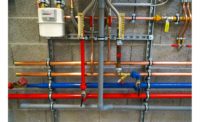Owners, service managers, and technicians are always asking me how to get the best results out of their service and maintenance calls. They typically mean revenue performance, thinking there is some sales technique or secret, and they are shocked when they learn that the key to the best results is to act with intention and intensity and execute an educational and engaging process while delivering a value-adding experience.
When customers call your company, they do so with the sole purpose of getting good information to make a good decision. I have found that every technician sales training that has any agenda other than this is a futile attempt to make a buck. Many more dollars are earned when customers feel respected and empowered to make choices.
The following is a summary of the eight stages and 50 steps to provide the “ultimate” service experience. The process starts after the call-taking customer experience coordinators answer the customer’s call and schedule a visit.
Stage 1: Be Prepared
Be prepared. Get in a service mindset and be ready to serve. You are on the clock.
- Pre-call preparation: Check service history: truck, tools, and resources are in order.
- Check your appearance: Properly groomed, good hygiene, uniform, ID badge, clean and fresh (check teeth, breath, and hands).
- Arrive on time.
- Park on street in front of home. Back into driveway after gaining permission.
- Be out of truck within 30 seconds and on your way to the door with diagnostic tools.
- Look for newspaper in front yard or empty garbage cans to begin serving customer.
- Notice the features and condition of the home.
- Knock on the door or ring bell. Step back to provide a comfortable space.
Stage 2: Create a Comfortable Environment
Open the call in a comfortable manner with a welcoming approach.
- Greet the customer and get on a first-name basis if comfortable.
- Put on floor-saving protection before stepping into the home.
- Exchange pleasantries and have ice-breaking conversation with customer.
- Present business card to customer with a free company-logoed gift.
Stage 3: Shift to Service
Build credibility, respect, confidence, trust, interest, and intrigue through process.
- Ask a question to turn the conversation towards why they called you there.
- Listen actively, take notes, and paraphrase what the customer tells you to show understanding and clarity.
- Ask the customer why they chose your company and what they know about it. Ask who they know that your company services. Share any promotions.
- Use a compelling statement to segue into getting started as well as to set your intention to be thorough and share all findings and options.
- Review your pricing policy and share “What You Can Expect” document that outlines your process (a great tool the customer can later share with a homeowner who is not present during the call).
- Tell the customer your measure for success is their complete and total happiness to the point they would use you again and happily refer others.
- Give the customer your “Happiness Checklist” and a card with your online review site link stating that your goal is to exceed their expectations. Mention drawing for prizes for best review and customer of the month.
Stage 4: Fact Finding
Gather facts regarding the house and the system to determine symptoms and causes.
- Make a mutual upfront commitment to expectations with the customer to investigate all symptoms of problems, diagnose the root causes, document them, and then share all findings and options and empower them with choices.
- Have the customer take you to the thermostat or equipment as appropriate and begin to explain your service process.
- Have the customer take you on a tour of the home and ask about their concerns as you check the performance of various components connected to the mechanical systems. Keep the customer engaged and ask the customer to show you the equipment.
- Each time you go out to the vehicle, inform customer what you are doing and what you have done. Explain the importance of what you are doing and why.
Stage 5: Prepare and Present Findings and Options
Diagnosis and Prescription.
- Conduct a thorough evaluation of all equipment and connected components and begin to note symptoms, findings, causes, and potential solutions.
- Show the customer all the issues, explain why the problem occurred and share your prioritized “Customer Options” sheet or notepad with findings and options.
- Connect your repair pricing guide to your “Customer Options” sheet and show price options for bundled solutions and minor remedy and show loyalty pricing for service agreement partners and full price for non-partners.
- Share what others in similar situations have done for consideration and expert third-party resources as relevant and appropriate. Explain the concept of building the perfect home environment over time, and how starting now may make sense.
- Share all the ways the customer can pay, including financing, and determine how they want to pay.
- Secure the customer’s decision by getting them to initial their selections and method of payment.
Stage 6: Excel at Your Craft
Perform the necessary tasks based upon the customer’s choices.
- Go to truck and gather the tools and parts for all work so you can explain and show the customer.
- Transfer selected options to your work order and have the customer authorize the work. Reference declined work on the work order and attach/scan the “Customer Options” sheet.
- Complete the authorized work. Double-check work performed and that system operates properly. Review everything.
- Fill out the service record decal on the equipment or adhere new one. Apply any tags or markers that might be required. Apply equipment decals as appropriate to all mechanical equipment.
- Cycle the equipment at the thermostat to ensure it cycles on and off properly.
- Invite the customer to see what you repaired, replaced, cleaned, etc.
- Explain anything they can do to help with safety, comfort, maintenance, longevity, and energy savings.
- Clean up work area, leaving it better than you found it. Apply cleaner and wax to all equipment. Look for opportunities to provide value-added service.
Stage 7: Ensuring Customers for Life
Detailed review, explanations, and paperwork ensure customer satisfaction.
- Finish writing up the work order with an explanation of findings, options offered, selected and declined, work performed, other items for consideration, and conversations had. Leave customer a copy of the completed work order (either hard copy or email).
- Secure all equipment component data as well as age and condition for all equipment, including components you did not service.
- If the customer is not a service agreement customer, provide a service agreement brochure and tie it into the explanation of partner pricing and benefits.
- Review the work order and explain all work completed, charges, warranties, etc.
- Collect payment.
- Ask the customer if they have any questions or other concerns. Thank the customer for the opportunity to serve. Ask if you met or exceeded their expectations. Hand the customer another business card and ask them to contact you if they have any concerns.
- Ask the customer if they have a relative, friend, neighbor, co-worker, etc. that could benefit from your services. Provide overview of your referral rewards program.
- Provide a gratitude gift and place yard sign with permission upon departure.
Stage 8: An Exit to an Extraordinary Experience
Don‘t miss the opportunity to WOW your customer after the experience.
- Complete the “Service Callback” or “Installation Callback” forms if applicable.
- Contact office or use computer to verify scope of work, payment, and that all required actions were performed.
- Call the customer within 24 hours to conduct a customer happiness survey.
- Send the customer a thank-you email and reminder for a review and referral.
- Enroll the customer to receive your periodic company newsletter; periodic email reminders/tips/offers/updates/bulletins; promotions; etc.
Many companies and technicians have never considered the detail of eight stages and 50 steps, and simply think customers want things fixed cheap and fast. I find they typically get what their process is designed to yield.
It’s the attention to detail of the Ultimate Service Experience that yields happy customers for life who spend more money and become ambassadors, cheerfully referring other customers more frequently.
Customers empowered with good information to make good decisions always feel they will make a better decision for themselves than anyone else would for them. It’s the process that compels customers to act in their best interest without any salesmanship.






Report Abusive Comment